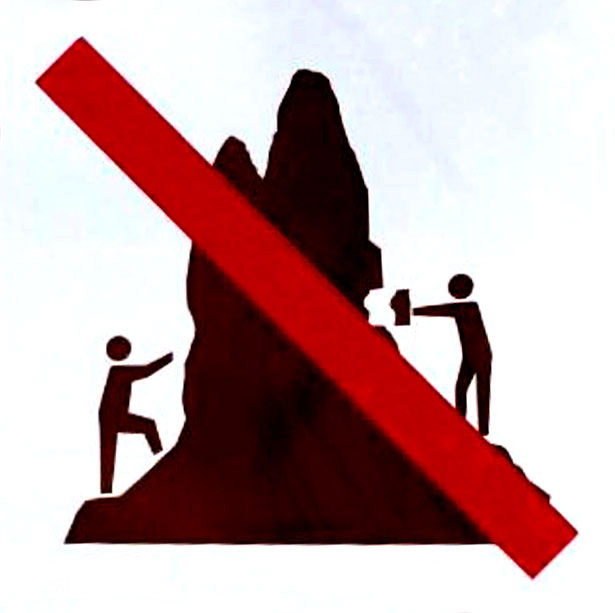
 Tufa is otherworldly, oddly enchanting, and one of Mono Lake’s most iconic and popular features. Tufa towers are important nesting sites for birds—from Osprey to owls—while underwater tufa is habitat for alkali flies. For years, photographs of tufa have played an important role in spreading the message that Mono Lake, and the tufa itself, needs protecting.
Tufa is otherworldly, oddly enchanting, and one of Mono Lake’s most iconic and popular features. Tufa towers are important nesting sites for birds—from Osprey to owls—while underwater tufa is habitat for alkali flies. For years, photographs of tufa have played an important role in spreading the message that Mono Lake, and the tufa itself, needs protecting.
Fragile rock
Growing only underwater, tufa is a precipitate formed when calcium-rich spring water mixes with carbonate-rich Mono Lake water—slowly building up around seeps and springs. Though tufa towers are rock formations, they are fragile—they crumble, topple, and erode from wave action, high desert weather, and, unfortunately, from people being careless around them.
Tufa for future generations
Today with a camera in virtually everyone’s pocket and with social media giving photographs more visibility than ever, there are a lot of amazing images of Mono Lake out there. Unfortunately, there are also many photos of people climbing on, standing on, and otherwise—knowingly or unknowingly—damaging tufa. Not only does damaging tufa negatively impact Mono Lake’s scenic value and fragile ecosystem, but it is also illegal under California State Park regulations.
Long live Mono Lake’s tufa
When you visit Mono Lake you can help save the tufa by enjoying and taking photos of the spectacular formations from the ground, rather than standing or climbing on them. Also, make sure others in your group know to be careful around the fragile tufa. After your visit, share your own responsibly-taken tufa photos with the hashtag #savethetufa to encourage others to take care of the tufa too.
This post was also published as an article in the Summer 2018 Mono Lake Newsletter (page 14).
